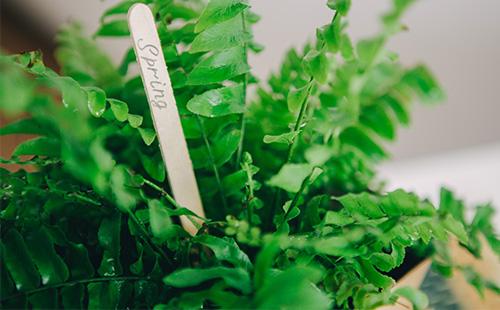The content of the article
Nephrolepis is a frequent resident of hospitals, clinics and health-improving institutions. And in this case, it is not so much its attractive appearance that is valuable as the ability to clean the air of germs and bacteria secreted by patients. A striking combination of unusual functions for a flower and aesthetics have turned a tropical fern into the most popular resident of domestic window sills. Therefore, growing nephrolepis at home is not only an interesting topic, but also very useful.
When dealing with nephrolepis, it is better to refuse a traditional pot. In a flower pot, this indoor flower looks much better. In it, he can demonstrate his spreading green paws in all its glory.
Features of species and varieties
A houseplant resembling a curly hair of an African girl is represented in our places by only two species:
- hearty;
- exalted.
Varieties of nephrolepis, bred by breeders, of course, much more. The table lists only the most popular of them with an indication of the characteristics of the waya (fern branches).
Table - Popular types and varieties of nephrolepis and their features
| Variety or species | Features |
|---|---|
| Exalted | - The root of the flower is high, located perpendicularly; - vaya once feathery; - picky variety for home growing; - the humidity level in the room is not important |
| Boston | - A variety bred by Boston breeders; - vaya twice-, thrice-, and in places even fourfold |
| Hearty | - Vayy grow up to the sky; - on shoots there are tuber-like formations |
| Xiphoid | - The variety is bred in the central part of the American continent; - very long waiy (up to 2 m) |
| Green lady | - The most magnificent vaya; - often used in landscape design |
Care for nephrolepis: what to consider
If a fern appears in the house, it is worth asking how to care for nephrolepis, because he will live a very, very long time. This flower is almost indestructible. Knowledge of the basic rules will be enough to ensure a decent life for the nephrolepis far from the rainforest.
Lighting
In the natural environment, fern prefers shade. But this does not mean that you can close this handsome man in a bathroom without windows or put a pot on the shelf in a dark room. Ideal lighting for nephrolepis is a little shade and a lot of diffused rays of the sun.The western or eastern windowsill is the best suited to accommodate this unpretentious handsome man. If the windows in the house face north or south, get a decorative stand, install a meter from the window opening and put a pot of nephrolepis on it. This is one of the most versatile and cutest interior solutions.
Temperature
In summer and winter, a tropical spore plant requires the same air temperature - in the range from 20 to 22 ° C. By and large, a home fern is able to withstand temperature drops of up to 12 ° C. However, it will not pass without a trace for a flower. Temperature changes are serious stress for nephrolepis, after which the plant begins to hurt.
Humidity level
Any plant born in the tropics loves moisture. Not an excess, but sufficient humidity. Nephrolepis is no exception. He will not die in a dry room. But if you notice that the leaves of the fern of nephrolepis dry, this is a signal to correct the humidity level in the house. Two to three times a day should be sprayed with a flower. And when leaving for a few weeks on vacation or a business trip, do not forget to put a three-liter jar of water next to the pot or pots of ferns.
Watering
The only thing that a modest nephrolepis needs is abundant watering. Peculiarities of care for nephrolepis in the summer period suggest abundant watering two to three times a week, the intensity of which can be somewhat reduced with the advent of cold weather - up to once every seven days. For irrigation, at least standing water should be used. But if possible, do not spare the green handsome filtered water.
Top dressing
At home, nephrolepis needs regular feeding from the beginning of spring to mid-autumn. Reviews of floriculturists cultivating fern in urban apartments indicate that fertilizer must be mixed using organic once and mineral fertilizing a second time. Top dressing is performed twice a month, alternating nutrients.
The soil
Ready-made soil for ferns is considered ideal for transplanting nephrolepis. Its distinguishing features are low density and lightness. This allows the soil to be saturated with oxygen enough. However, you can prepare the soil ideal for planting nephrolepis on your own.
Preparing a Mix
- We take one part of peat soil.
- Add one part of the leafy soil.
- Add one piece of sand.
- Add charcoal in a small amount.
- Add a little pine bark.
- Mix thoroughly.
- We fill up a drainage 1-2 cm high in a pot for nephrolepis.
- We fall asleep above.
Transfer
To correctly transplant nephrolepis into another pot, you need to know the approximate age of the plant. If the indoor flower is young enough (he is from one to four years old), for transplantation you need to choose a shallow dish. The plant "aged" will require much more substantial depth and width.
Reproduction: 2 ways
If you decide to clone a curly handsome man, wait for June.There are two ways to plant a plant: dividing the mother bush and separating the children during transplantation or shoots.
There is nothing complicated about taking care of nephrolepis after a transplant. The basic rules for the care of ferns are also relevant for a young, barely separated from the mother plant.

Shoots
Features. This method of "cloning" the most simple and affordable. Even a novice grower can propagate nephrolepis with a mustache. The main thing is to choose the right time for this, without disturbing the flower in the autumn-winter period.
Action algorithm
- We install next to the pot in which the main plant sits, an additional container with pre-prepared soil.
- Sprinkle the top of the shoot with earth in a new pot.
- We are waiting for the mustache to release three or four wai.
- We break the connection between the mother plant and the new sprout.
Division
Features. Reproduction by division is carried out with an annual plant transplant. As planting material, you can use only those parts of the rhizome on which small vaii have already formed. Before this moment occurs, fern cannot be planted due to the youth and immaturity of the mother tuber.
Action algorithm
- We take out the mother plant from the pot in order to transplant it into a new container.
- Separate root fragments from the rhizome that have buds in the form of miniature branches.
- We transplant planting material into a small pot filled with soil for fern.
Pest Control: Causes and Symptoms
Pests rarely infect nephrolepis. This representative of the fern family is considered a plant with good immunity from parasites. However, the "classic" scale shield, spider mite, aphids and mealybugs sometimes do not bypass this flower as well. Therefore, the florist should know the causes of the appearance of insects on the vayayas of nephrolepis and the symptoms of lesions, details can be found in the table.
Table - Pests of nephrolepis: causes and symptoms
| Insect | Reasons for the appearance | Symptoms of lesion |
|---|---|---|
| Aphid | - Infection from chrysanthemums or roses brought home in a bouquet | - Sugar clots appear on the flower; - Wii stick to each other, being covered with aphids |
| Spider mite | - Insufficient humidity; - infection from bouquets brought into the house | - Small brown numerous holes appear on the vayai |
| Mealybugs | - Waterlogged soil | - The condition of the leaves worsens; - vaya twists |
| Shield | - Dry indoor air | - A large cluster of small brown bugs forms on the back of the waya |
A small amount of pests from fern can be washed away - in the literal sense of the word. Wipe the waya with a sponge dipped in water will not succeed due to the unusual structure of the branches. But to send nephrolepis for a shower is easy. To do this, wrap the pot with a plastic bag or film, fixing it on the base of the root. The fern should be turned upside down and rinsed thoroughly in the shower.

Disease and treatment
In addition to insect pests, nephrolepis diseases can be triggered by poor or improper care. The following three problems are the most common.
- Lack of growth. If the nephrolepis does not grow, and the green veyi are significantly pale, then one of two things: either the plant is too crowded in the pot, or the room temperature is too low.
- Waiy dry up. If the leaf of a home fern dries, it means that it needs additional watering and is sorely lacking in moisture. If you are sure that everything is in order with this item, pay attention to the location of the flower.Drying waiy can be the result of the damaging effects of direct sunlight.
- Waiy rot. Or blacken. Or both. The reason is a fungal infection.
Gray rot and fungal wilting are the most common ailments of domestic fern. The following table provides tips and techniques for dealing with these problems.
Table - Fight against gray rot and fungus
| Disease | Symptoms | Methods of struggle | Tip |
|---|---|---|---|
| Gray rot | - Petioles, the base of the root and the vaya are affected by a shaggy coating of smoke; - brown rust spots appear on the waiyi | - Regularly ventilate the room; - temporarily lower the temperature in the room | - Isolate from other indoor flowers. |
| Fungal wilting | - The leaves in the neighborhood shrink, wither and dry out very quickly; - at the next stage, rust spots appear | - At the stage of the appearance of spots, treatment is pointless; - the plant is better to eliminate, otherwise the fungus will hit the "neighbors" on the windowsill | - Preventive measure - apply fertilizers with a low nitrogen content |
Nephrolepis is a hero of various legends and beliefs. They say that this flower instills cheerfulness and positive energy in people. Psychologists say that home fern helps to normalize communication between people of different psychotypes and greatly facilitates their communication.
Office employees fell in love with nephrolepis because, according to legend, it attracts material wealth into a person’s life. And parents seek to plant home fern in children's rooms, believing that the ancient representative of the flora is able to protect the younger generation from damage and the evil eye. Believing legends or not is a private matter for everyone. But one thing you now know for sure: growing fern nephrolepis at home will not take much time and effort. But it will give a lot of positive emotions from the contemplation of a fluffy handsome man in the cozy interior of your home.
Reviews: "Lots and lots of lush greenery!"
Having decided that I need to fill the house with fresh flowers, I began to look for what would suit us. My cat complicated the search, she clearly intends to cut these flowers with her teeth))) As it turned out, there are very few absolutely non-toxic flowers, and nephrolepis is one of these. My friends and relatives did not have this plant, and I decided to look into the flower salon, but not in the usual one, where the bouquets are collected, and where the plants are sold in pots. I immediately recognized the plant I needed, but it was already three species. In the end, I chose - Nephrolepis "Green Lady" - a very beautiful, lush, green fountain of leaves. Despite the fact that while he is in a small pot (approximately 800 ml) the volume of his crown is quite large, I hope that after transplanting it will grow even more. The Green Lady variety is a fairly popular fern among indoor plants; this variety is unpretentious, it can tolerate dry air and adverse conditions. It can grow in partial shade and in diffused light. It looks good in a hanging pot, but so far there is no way to hang it)) And it also effectively cleans the air of harmful substances and absorbs radiation from a TV or computer, if placed next to it. Kosh immediately spotted a new resident, and he came to her taste, but I drive her =)
ksenia91, http://irecommend.ru/content/domashnie-dzhungli
Fern "Nephrolepis", I have been growing for several years. And I think with many, because with his beauty he deserved his popularity. It has vertical, graceful curved leaves, dark green in color. He likes moisture, therefore it is always worth watering on time, spraying leaves, but the main thing is not to over-moisten and not to dry the soil. In winter and spring, watering is moderate, in the summer and autumn wet. He also likes an almost dark or bright place, but not a sunny room, from which the leaves turn yellow. It grows well both in tight pots and in large ones, good light soil is suitable for this. Very easy to reproduce, a small bush is well and quickly accepted in the water, taking long roots. After it is well accepted in the soil, sometimes releasing its root hairs. In general, he does not require much attention and care, except for watering.Plant the Nefrolepis fern, and in a few months it will release its long vertical leaves, and in a few years a huge beautiful bush will grow in Nefrolepis. But he has only one minus - he does not like it when the earthen lump is overdried, after the leaf also turns yellow, crumbles, the natural beauty of the fern disappears. I recommend for lovers.
Ksusha30, http://otzovik.com/review_527320.html

